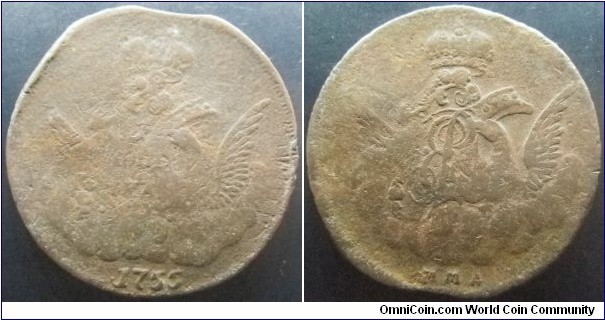
Overstruck coins is an interesting area for numismatics. The first world overstruck coin that I am aware of is issued during the early Roman era. This tradition of overstriking coins would have continued till the early 20th century.
So what is an overstruck coin? Why was this done? Why is this interesting?
An overstruck coin is essentially using a coin instead of a blank planchet to be struck as a new coin. The result of this normally looks radically different as elements of the underlayer may show up. This would also mean that all overstruck coins would look different even if the same coin (planchet) was used to be overstruck as "new coin". Please note that a counterstamp is different from overstrike as a counterstamp only replaces part of a coin whereas an overstrike usually obliterate the details of the original host coin.
What an overstruck coin is and what an overstrike event can do to a coin:
Original coin:
| What a typical coin without overstrike would look like | Overstruck coin with features of wings which does not appear on a typical 2 kopek coin |
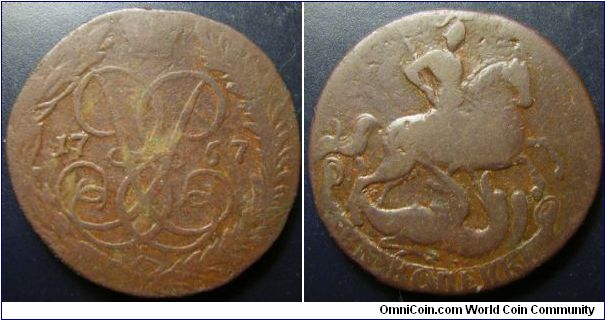 |
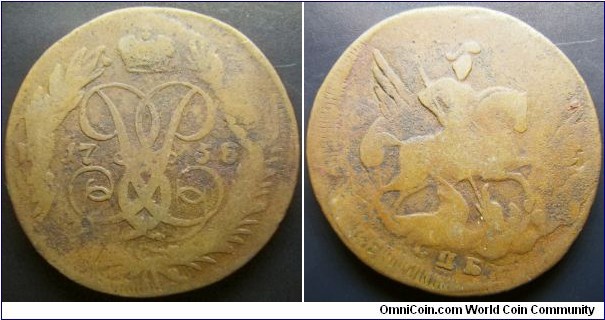 |
So why was this done?
A mint like any other businesses must strike coins to make a profit. There would have been times when obtaining fresh new planchets may have been prohibitively expensive within a certain time frame. This pricing factor would include melting down older circulating coins to create fresh new planchets. It would then make sense to use old coins that are no longer legal tender to be overstruck as "newer" coins. This could also include foreign coins that have been circulating previously in the country.
One of the biggest factors that influenced minting practises was economic pressures. Back in the old days where coins were worth their weight in terms of gold, silver and copper, a spike in metal prices usually meant that as soon as the prices of metal went up, a lot of the circulating coins were melted down to be resold as scrap metal and hence mints were quick to react by overstriking coins.
At times, this could have been done due to political reasons. In eras where monarchs existed, an unpopular ruler overthrown would have meant that all of his / her era coinage would have been removed from circulation in haste to be replaced with newer coins as soon as possible.
Lastly, mints may have some employees overstriking coins as "mint sport" where impossible combinations occur. At times where fresh planchets are not available, a random coin would have been used for a trial. A good example is a 1804 US dollar coin overstruck over a Swiss thaler. (unique). Some more intentional errors such as US dime overstruck over a Lincoln cent would have intentionally been struck. I personally do not classify overstruck coins as error coins.
Why is this interesting? Details of the newer looking coins look hideous!
I personally find overstruck coins are fascinating and hold a lot more value than one may think of in particular where the original host coin originated from another country. They are normally overstruck with a reason and a fair number of them do have different reasons behind them. Please note that I am not able to explain for all coins of why the overstruck event occured but I would presume that the reasons would be one of the above. Would appreciate if you can lead me in the right direction.
Value wise - can overstruck coins be valuable even though they may look hideous? Most certainly! Some rarer examples do have important pieces of history behind them.
There may be a catalog of various overstruck world coins - this is a very specialized field. If you do know any books or related materials, please let me know. Meanwhile please feel free to enjoy the rest of my collection which hold about 40 different coins. This includes coins that have been overstruck to become tokens, propaganda material, possible contemporary counterfeits and so forth. Most of them are common but some are excessively rare. I'm hoping to pick a couple more interesting examples.
| New coin: 1802 7 kreuzer | Original host: 1795 12 kreuzer |
 |
 |
| New coin: 1948 10 groschen | Original host: German Nazi era 10 reichpfennig |
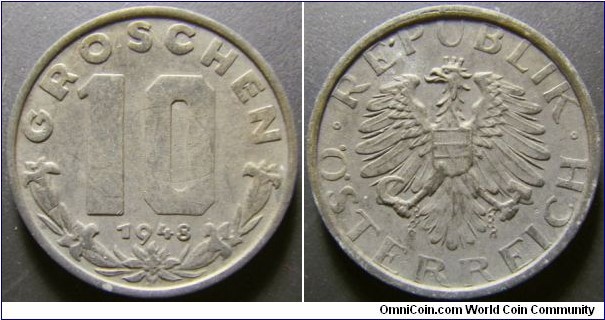 |
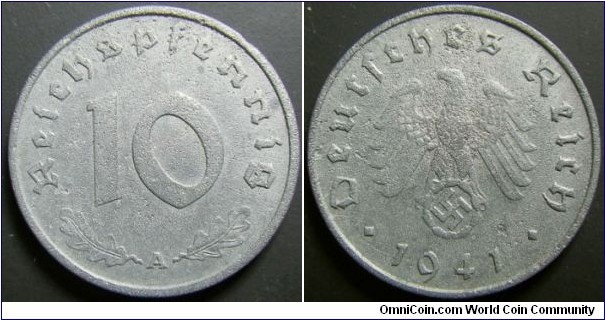 |
1802 7 kreuzer overstruck over 1795 12 kreuzer. No idea why this happened at this particular era.
The overstruck groschen over reichpfennig is an interesting conversational piece and there is no reason why it couldn't have happened. When Austria was under German 'occupation', Nazi coins did circulate as Austrian mint was striking coins for Germany and Austria. While most of the Nazi era coins were systemically removed by the Austrian banks and the Austrian mint, the newly overstruck coins didn't get to last a lot longer. You would also presume that the Austrians would be keen to remove any materials associated with the Nazi regime.
" 10 Groschen coins first issued in 1947 were replaced by aluminium coins in 1951. These zinc coins remained in circulation until June 1959 and remained exchangable until October 1959. Zinc 5 groschen were not affected by composition / design change and were still redeemable but were no longer struck in 1992 due to low face value. " - Special thanks to Christian @ coincommunity.com
| New type: Azores 1795 10 reis | Original host: Portugal 1791 - 1799? 5 reis |
 |
 |
Azores is a group of islands colonized by the Portuguese in mid 15th century. Despite more than 1500 km away from Portugal, there was different coinage for this island. As of why - I'm still researching...
| New type: Belgium 1835 2 cents | Original host: Dutch 1 cent (1817 - 1837) |
 |
 |
Interesting how Dutch coin was used.
| New type: Bhutan 1820 - 1835 1/2 rupee (deb) | Original host: British India 1/4 Anna |
 |
 |
A rather unusual coin. Back until 1974, Bhutanese rupee was equivalent with the Indian rupee. I am guessing Indian coins must have circulated back then and some coins were struck to Bhutanese coins. Not common.
| New type: 1820 960 reis | Original host: Lima 1813 8 reales |
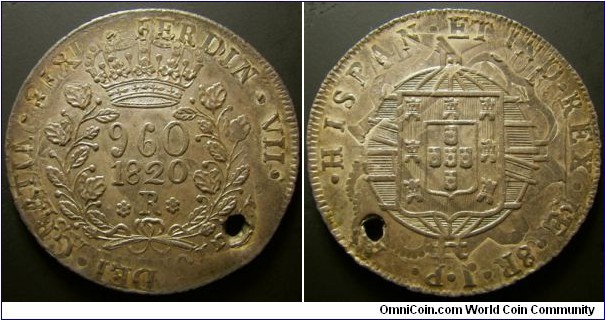 |
 |
From my understanding - the Brazilian mint was overstriking Spanish 8 real coins to produce 960 reals. The unusual denomination was due to the silver content of the coin.
China's overstriking event is an absolute chaos to understand as possibly highly corrupt Chinese mint officers have one objective in mind, that is to make money. This ranges from the low copper content, warlord cast coin issues, contemporary counterfeits and so forth - this is large enough to discuss on it's own. The only two confirmed 'official' overstruck coins are the 1926 Sichuan 100 cash and 1933 Uighurstan (East Turkestan) 20 cash. 1926 Sichuan 100 cash is an interesting coin to look at - if you look at the two different host coins, they both started off as 20 cash and inflation must have raised by 5 fold. Uighurstan coins are much tougher to locate: an Islamic state that tried to declare independence in 1933, this did not last very long - less than four months.
The rest is for up for debate. The Shensi 2 cash is the only example that I have seen and it could be a potential contemporary counterfeit. The issue of various Chinese 10 cash overstruck over Korean 5 fun is another matter on it's own. Some Chinese numismatics scholars believe that it was done by official sanctions but are puzzled over the the lack of materials supporting this. Some argue that this was done as mint sport. The last opinion is the usual suspect - contemporary counterfeit. From my observation, a lot of such Chinese overstruck coins come from provinces located on the Eastern side of China. I personally do not think it's not unreasonable to come to a conclusion that a huge batch of Korean 5 fun were shipped and sold as scrap. However whether they are contemporary counterfeit or not - one should take note of how plentiful they can be in the market. I would have trouble believing that a couple of crook merchants had the ability and funds to do so. I suspect that a mint must have gone rogue and accept bribes to strike overstrike coins on a wide scale.
Fantasy
First coin is a rather dangerous overstrike. It seems that this is a contemporary counterfeit overstruck over a genuine 1914 yuan coin. The supposedly coin - Yuan Shi Kai with Gansu on the side is a rather scarce to rare coin as a lot of these coins were not accepted in the marketplace when it was first released. As Gansu Province had trouble sourcing silver during this era, silver content is significantly lower than other provinces and hence had two extra characters to notify that this is from Gansu Province. This obviously was not popular with the general public as they believed they were ripped off, hence this particular type of coin was removed from circulation very quickly.
The 'Freedom dollar' overstruck by BCSSA (Berkeley Chinese Students and Scholars Assocation) is a rather intriguing "coin". Came with an envelop and overstruck in the early 1990s, these were done by small student organizations at universities such as Tsinghui and Beijing Universities protesting Tiananmen Square massacre. This was supposedly a covert operation as presumably trying to distribute anti-communist propaganda would have led to a lot of trouble, if not thrown in jail! Note that during this era, old Chinese crown coins were not worth much - probably worth close to metal value. Note that various silver crowns have been used - from Chinese Province coins, Republican era, Mexician pesos - essentially coins that circulated in China. Special thanks to WD1040 @ coincommunity.com
| New type: 1942 5 centimos | Original host: 1903 2 centimos |
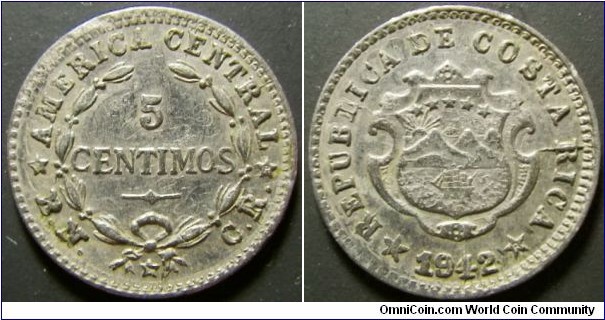 |
 |
An interesting overstruck coin over 1903 2 centimos. No idea why other than possible redenomination.
| New type: 1812 12 skilling | Original host: 1771 1 skilling |
 |
 |
An interesting coin from Denmark - 1812 12 skilling overstruck over 1771 1 skilling. There is a huge year gap difference. Perhaps this was the only copper coin available for overstriking purpose? Note that it seems that this coin has been cut down in shape - maybe the overstruck coin was too big and it was shaved down?
| New type: Cancelled 50 piastre | Original host: 50 piastre |
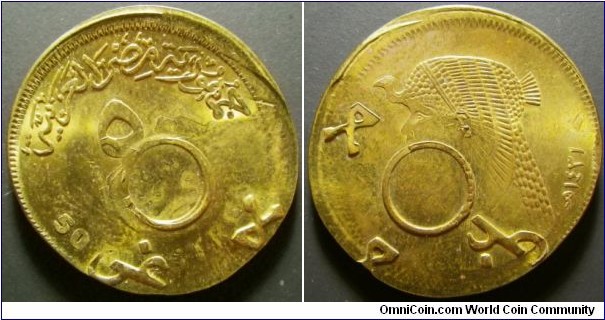 |
 |
| New type: Cancelled pound | Original host: 1 pound |
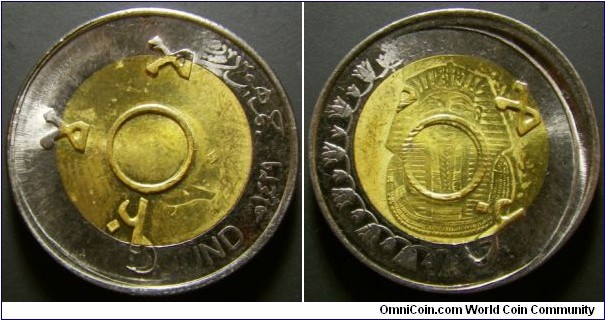 |
 |
Egypt has an interesting way of devaluing coins - they overstrike them to cancel them. I'm not too sure why this is done instead of just splitting them in half or damaging them - they must find this more cost effective???
| New type: 1923 1 cent | Original host: China 1905, 1906 10 cash |
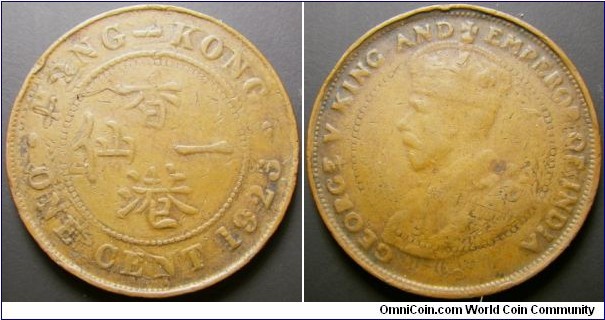 |
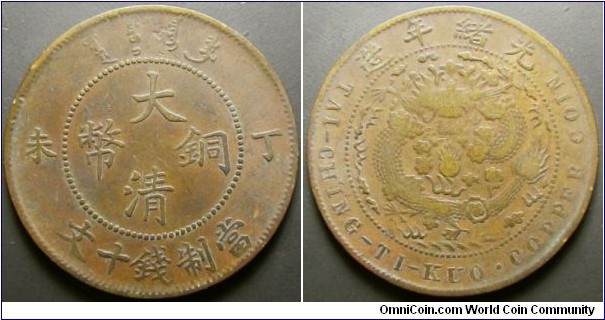 |
This is a rather unusual overstrike - possible contemporary counterfeit? But why???
| New type: 1690 crown | Original host: <1690 half crown |
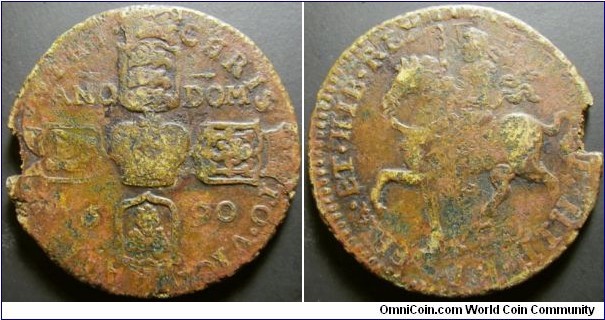 |
 |
Despite this type of coin is labelled as gun money, church bells were used as well. This was struck during James II era during 1689 - 1691. As England was waging a war, coins were struck in base metals. The original coins struck in 1689 had months dated on them as well as these coins were supposed to be gradually redeemable to silver except this didn't happen - James II lost the war. Inflation must have occured as coins were overstruck with twice the face value, i.e. crowns overstruck using half crown coins, shillings over sixpence and so forth.
| New type: 1919 20 centesimi | Original host: 1894 / 95 20 centesimi |
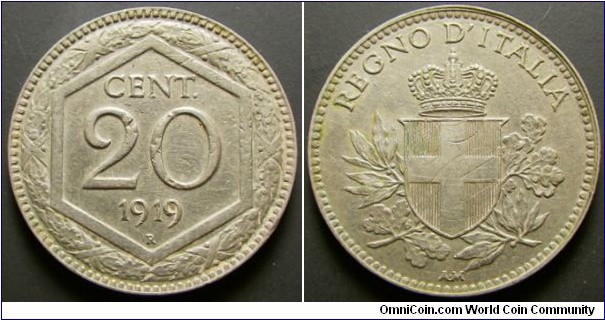 |
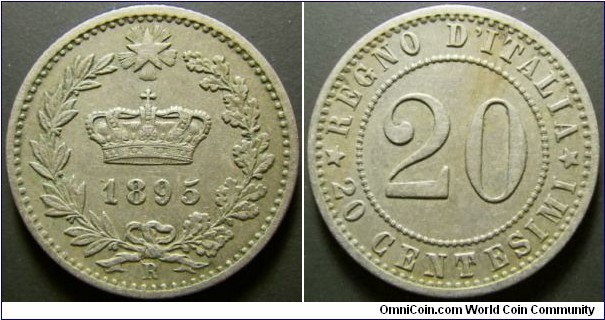 |
An interesting coin from Italy. While the denomination remained the same - there must have been a need to get rid of the older design. Could be a not so popular rule? Another key is to factor in that the new coins were minted right after World War I and nickel and copper would have been limited in supply.
| New type: Latvian phone token ND | Original host: Soviet Union 1961 - 1991 15 kopek |
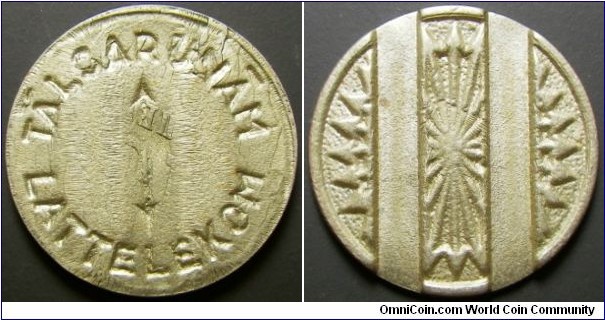 |
 |
This is a rather interesting "overstrike" or rather some serious modification was done to this 15 kopek. Presumably done right after the Soviet Union fallout where it might have been easier or cheaper to use the defunct currency to make phone token.
More examples can be found here: http://www.capatob.info/collect/tokens_coin.html
| New type: Sarawak 1863 1 cent (restrike???) | Original host: Straits Settlement 1920 50 cents |
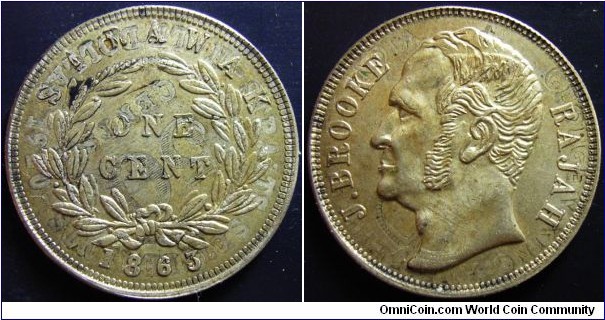 |
 |
I honestly do not understand what this is - a restrike of using old dies???
| New type: 1811 5 groszy | Original host: Preussen 1782 1/24 thaler |
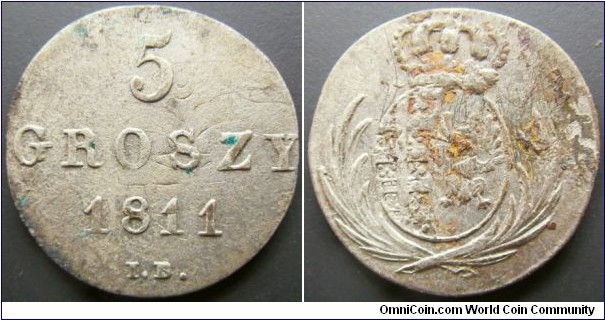 |
 |
Presumably overstruck over Preussen 1/24 thaler or what I have been told.
For complete collection and full details, please click here. A couple of rarer highlights are shown here - both of them are excessively difficult to locate.
| New coin: 1757 1 kopek | Original host: Sweden 1746 (?) 1 ore |
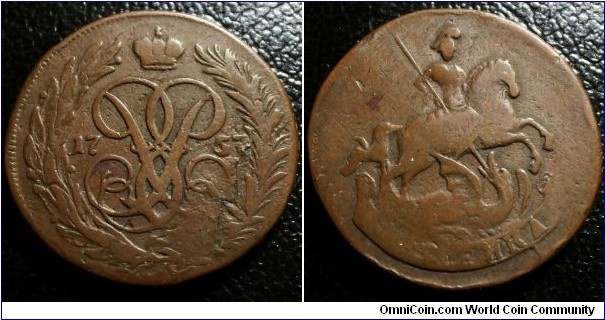 |
 |
| New coin: 1795 MM 2 kopek | Original host: Sadagura 2 para 3 kopek |
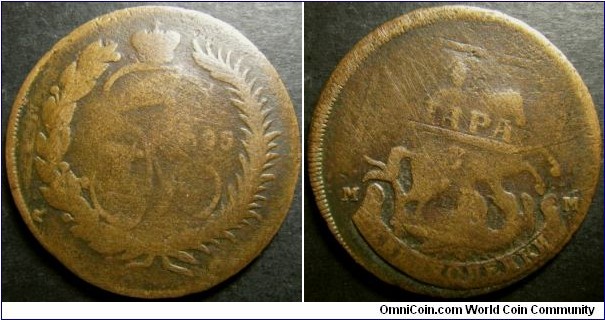 |
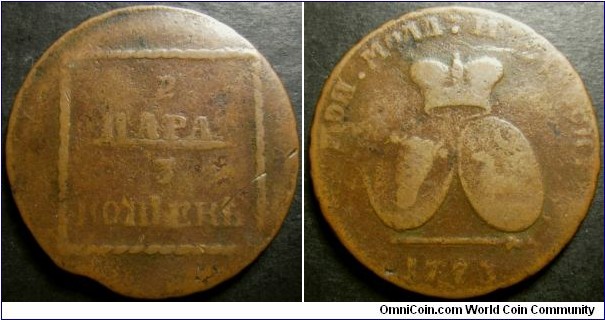 |
These two are some of the toughest overstruck coins that you can ever find.
| New type: 1802 1 skilling | Original host: 1700s 2 ore |
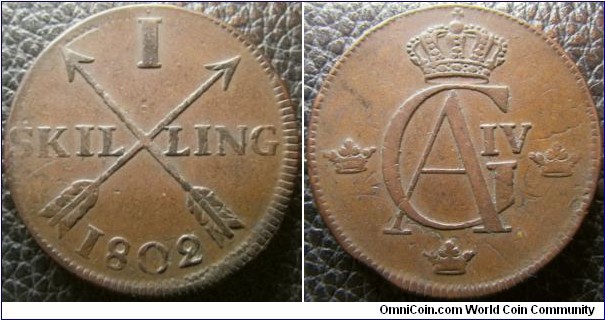 |
 |
Sweden has a history of overstriking older copper coins, presumably due to the copper value dropping and raising over a period of time.
| New type: 1826 5 rappen | Original host: ? |
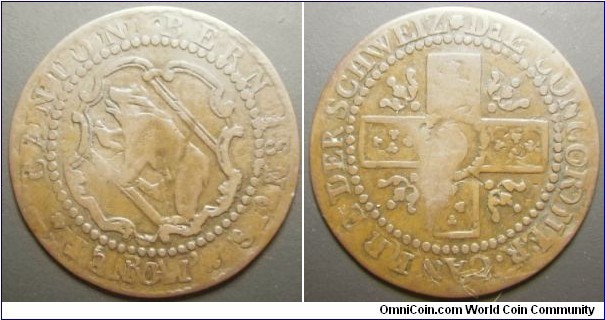 |
 |
| New type: 1826 1 batz | Original host: ? |
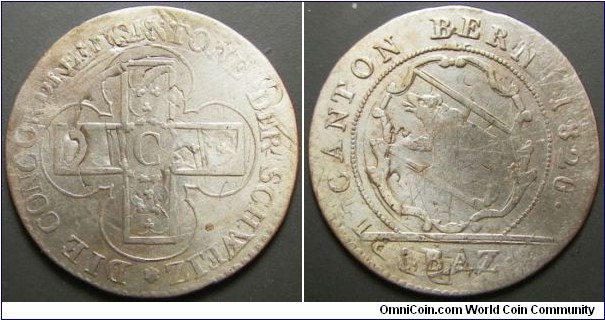 |
 |
No idea what they are overstruck over except older Swiss Canton coins...
Hope you enjoyed looking at them.
Last updated: 26 February, 2017